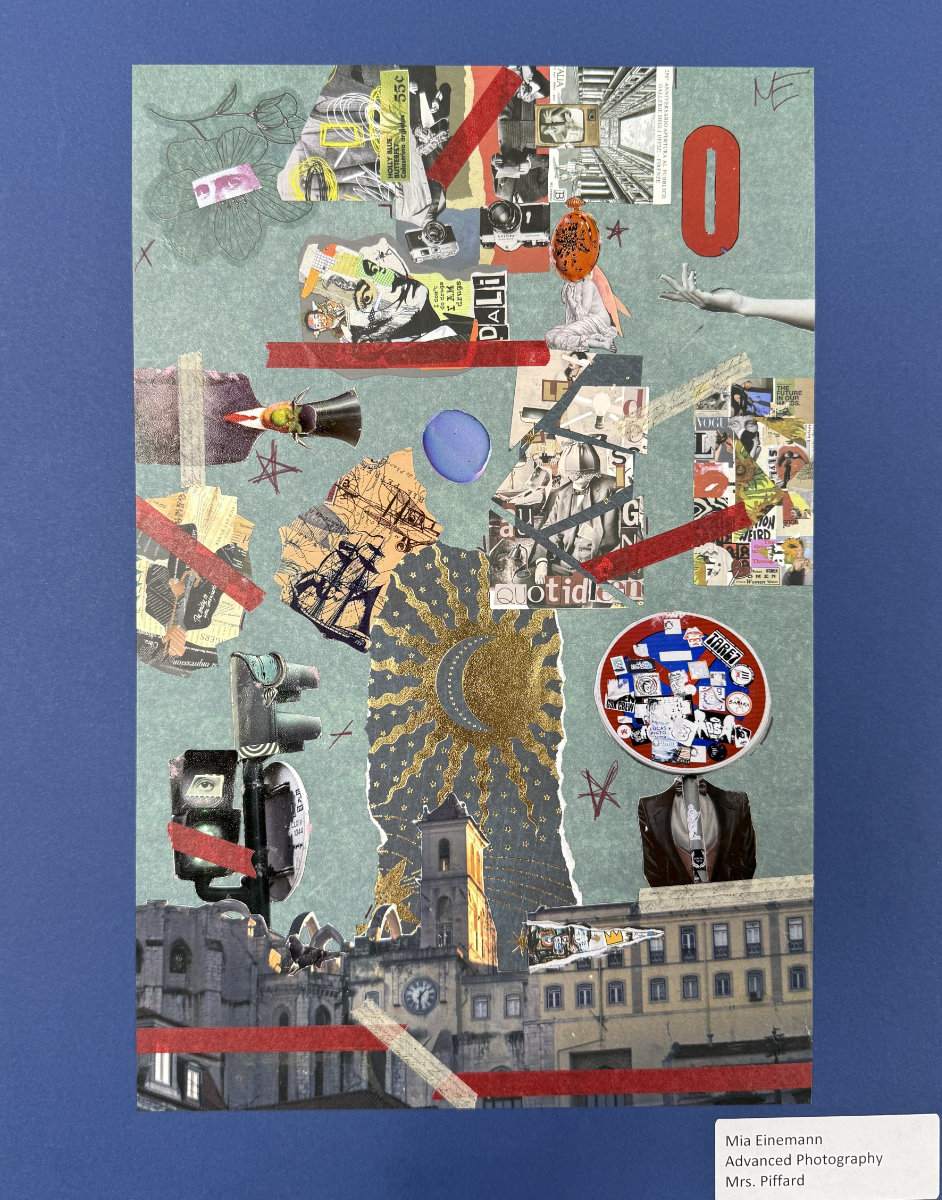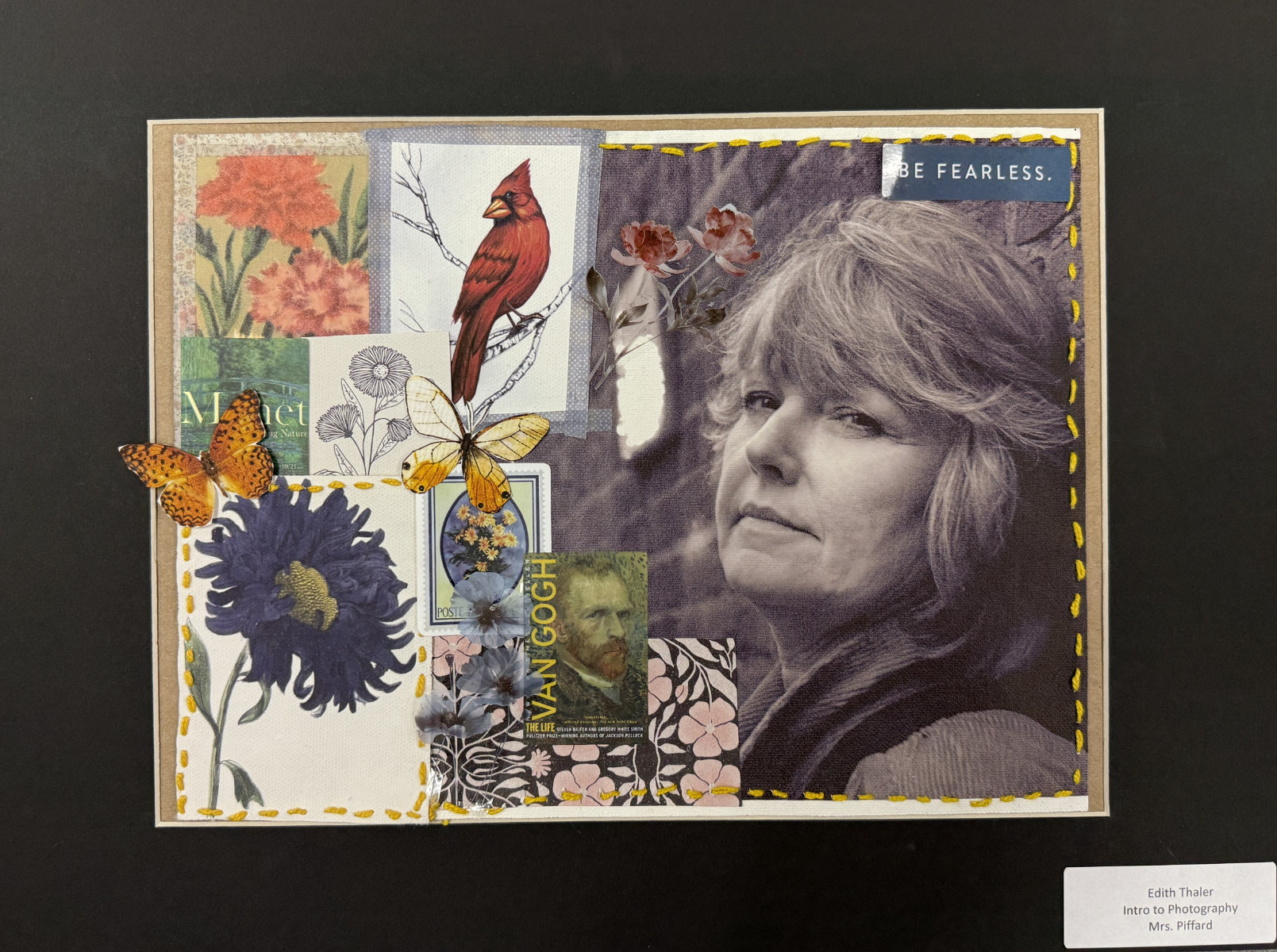Photographers Learn About Collage Art & Photomontage
May 15, 2025
The concepts of photomontage and collage were the topics of a recent lesson in a Huntington High School photography course classroom on the lower level of the building.

Huntington High School photographers captured five of the top six prizes in the open division of this year’s Huntington Camera Club contest. It was an impressive showing and displayed the excellence of the high school photography program.
“What is photomontage?” photography teacher Pamela Piffard asked. “It’s a type of collage that specifically uses photographs or photographic elements. The images are cut, layered and arranged to create a new composition. It can be done physically (cutting and pasting printed photos) or digitally (using software like Photoshop).
Students were told that collage art includes various materials such as paper, magazines, fabric, paint and found objects. “Collage art can incorporate photographs, but also other textures and elements like newspaper clippings, textiles or drawings,” Mrs. Piffard said. “It’s more diverse in media, including mixed media and three dimensional layering.”
Class members were given an assignment requiring them to explore the concept of collage and photomontage with their photography, “combining physical materials to create layered, meaningful compositions that expand your creative storytelling skills.”
Students also learned about “image symbolism” and were provided with a variety of samples to further their understanding.
“Image symbolism involves using images to convey deeper meanings and represent abstract concepts, often beyond the literal definition of objects,” Mrs. Piffard said. “This technique is commonly used in art and literature to invoke emotions and provoke thought, making it a powerful tool for storytelling and communication.”
Students were told they would be graded on composition, including the quality of the overall layout; craftsmanship, including neatness and professionalism in presentation; challenge, including risk, experimentation, creativity and effort; commitment, including follow through and rigor/ambition and effort and artistic growth, including being able to explain their work and the choices they made.
The collage art assignment required students to brainstorm and plan and then photograph at least six images of the person who is the subject of the collage/photomontage. Students were also asked to gather “filler” images from the internet, books and magazines. The images needed to be assembled as a tactile collage.
“We will gather as a class to present our images and get feedback from each other,” Mrs. Piffard. “Please be ready to explain the elements you added to your collage/photomontage and the meaning behind the elements you added.”
